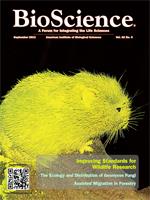Where did all those dead animals come from? What are they used for? These are questions that natural history museums must be prepared to answer. Specimen collections are a valuable research tool, but their utility remains a mystery to many. In this article, we introduce the Web exhibit “Doing Natural History” ( http://mvz.berkeley.edu/DoingNaturalHistory) as an educational resource that draws connections between early twentieth-century evolutionary biology and innovative museum science today. As a companion to the Web exhibit, in this article, we show how natural history research changed during the twentieth century and argue that collections have provided the basis for innovation in natural history, integrative biology, and, more generally, in the life sciences. Drawing on examples from the University of California, Berkeley', Museum of Vertebrate Zoology, we look at the practice of natural history to reveal the centrality of collections to both practice and theory in the life sciences.
How to translate text using browser tools
1 September 2012
Doing Natural History
Mary E. Sunderland,
Karen Klitz,
Kristine Yoshihara
ACCESS THE FULL ARTICLE
It is not available for individual sale.
This article is only available to subscribers.
It is not available for individual sale.
It is not available for individual sale.

BioScience
Vol. 62 • No. 9
September 2012
Vol. 62 • No. 9
September 2012
collections
education
integrative biology
museum
natural history




